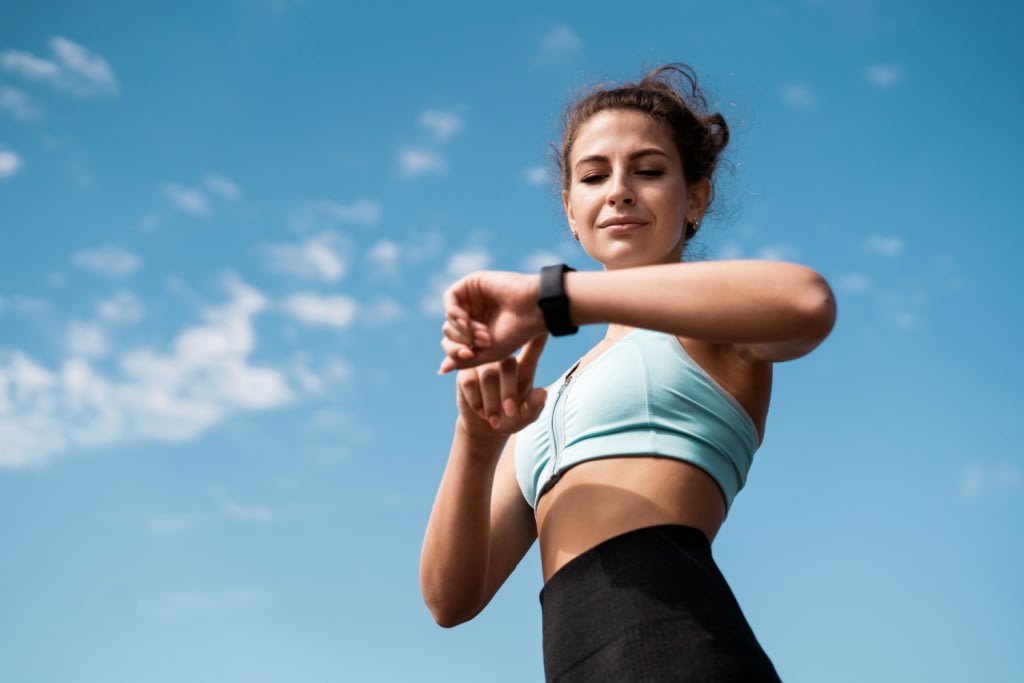Everything You Need To Know About Heart Rate Variability
While heart rate variability was once something you could only measure with specialised devices, modern technology has seen this health metric take centre stage. But is it something you need to be tracking?

April 24, 2024 - Updated April 24, 2024

Heart rate variability (or HRV) is the measure of variance in time between your heartbeats. Throughout your day, the interval between each of your heartbeats don’t stay exactly the same, and that constant variation is normal and healthy. You can even feel the intervals change by sitting with your fingers on your pulse and taking some slow deep breaths.
These subtle fluctuations are just a fraction of a second, and were once undetectable without the use of specialised medical devices such as an electrocardiogram machine (or an EKG).
While this metric was once something you might only come across in a medical setting, technological advances mean a number of fitness trackers now measure your HRV, and many consider it a go-to measurement for understanding your overall health, fitness and wellbeing.
How does heart rate variability work?
According to Harvard Health, your heart rate variabilty is controlled by the autonomic nervous system (ANS), which also regulates other bodily functions such as your heart rate, blood pressure, breathing and digestion. There are two parts of the ANS: the sympathetic nervous system (known more commonly as the fight or flight response) and the parasympathetic nervous system (the rest and digest response). Measuring your HRV offers a noninvasive way to detect imbalances in your ANS.
The variability in your heart rate is based on the needs and health of your body, and your sympathetic and parasympathetic nervous systems both work to support your heart and influence how your body responds to the world around you. For example, when you’re in danger your sympathetic nervous system and fight or flight response kicks in, adrenaline is released and your heart rate increases. After the danger subsides, your body hands the reins back over to the parasympathetic system, in turn slowing your heart rate and calming your body back down. According to the Cleveland Clinic, your HRV measurement can reflect how adaptable your body is.
What’s the difference between “high” and “low” heart rate variability?
Everybody has a unique heart rate variability, and some people may naturally experience a higher or lower variability. What’s high for you may be low for somebody else and vice versa and there are no national guidelines to suggest an acceptable framework for measuring a “healthy” HRV, but unlike resting heart rate and blood pressure, high HRV is actually a good thing.
If you’re in a chronic state of stress (living constantly in that heightened fight or flight mode), your body won’t be moving between the two systems as often and the variation between your heartbeats won’t change much. For someone with a healthy, strong body, those intervals will fluctuate over days and weeks as they deal with spikes of stress or challenge their body with exercise, then come back to a more relaxed state.
If you track your HRV, it’s important to remember that fluctuations in your measurements are to be expected and you should only compare your metrics against your own trend lines over time. Harvard Health highlights that if you’re tracking your HRV, you might begin to see a correlation between your measurements and health and lifestyle choices. The longer you track your HRV for, the more accurate a picture it begins to paint.
Because a higher heart rate variability reflects your body’s ability to adapt and respond to changes, it’s believed to typically indicate better health outcomes. According to Harvard Health, a higher HRV typically relates to greater cardiovascular fitness. Cleveland Clinic even suggests people with high heart rate variability are happier and less stressed, while a lower heart rate variability may suggest current or future health problems, with a 2022 systematic review and meta-analysis highlighting that a lower HRV can represent a higher mortality risk.
Everybody is different, so if you want to better understand your unique heart rate variability and how it correlates to your own health and overall wellbeing, it’s best to reach out to your healthcare provider.

What factors influence your heart rate variability?
While there are a range of lifestyle factors that influence your HRV, there are also elements you won’t be able control like your age, genetic factors and hormonal fluctuations. Yes, even your menstrual cycle can affect your HRV, with a study finding that the sympathetic and parasympathetic nervous system activity differs throughout each stage of your cycle.
Factors that affect your HRV include:
Age: your HRV will typically decrease as you get older.
Gender: research suggests this one is uniquely linked to your age! For women under 30, HRV is typically lower than in men. However, this difference begins to decrease after 30 and disappears after the age of 50.
Genetics: everybody’s baseline HRV is different, and your unique genetic makeup will play a role in influencing what your HRV looks like.
Sleep: looking for another reason to prioritise getting enough shut-eye? Studies have shown sleep deprivation can negatively impact your HRV and other cardiovascular health markers.
Mental health: a higher HRV typically suggests lower stress levels, and a lower HRV has been associated with higher self-reported instances of depression and anxiety.
Physical health: minor and major illnesses such as common viruses and more serious heart conditions can lower your HRV, while other health problems (such as heart arrhythmias) can cause a higher HRV. This is one of many reasons why it’s best to discuss your HRV with a healthcare professional if you’re using it to assess your health.
How can you accurately measure your HRV?
While wearables offer an accessible and low-cost way to track HRV, it’s important to remember that commercially available devices don’t offer the same level of sensitivity and accuracy as medical devices like an electrocardiogram. While this might be a metric you enjoy tracking (and it can certainly play a role in better understanding your overall health and wellbeing) a healthcare professional is best placed to help you interpret the numbers, their accuracy and what they mean for you.

Amy is a writer and editor at Sweat. She has over a decade of experience in women’s publishing and digital media and has previously worked across titles including Mamamia, Grazia and Cosmopolitan.
* Disclaimer: This blog post is not intended to replace the advice of a medical professional. The above information should not be used to diagnose, treat, or prevent any disease or medical condition. Please consult your doctor before making any changes to your diet, sleep methods, daily activity, or fitness routine. Sweat assumes no responsibility for any personal injury or damage sustained by any recommendations, opinions, or advice given in this article.
Wellbeing